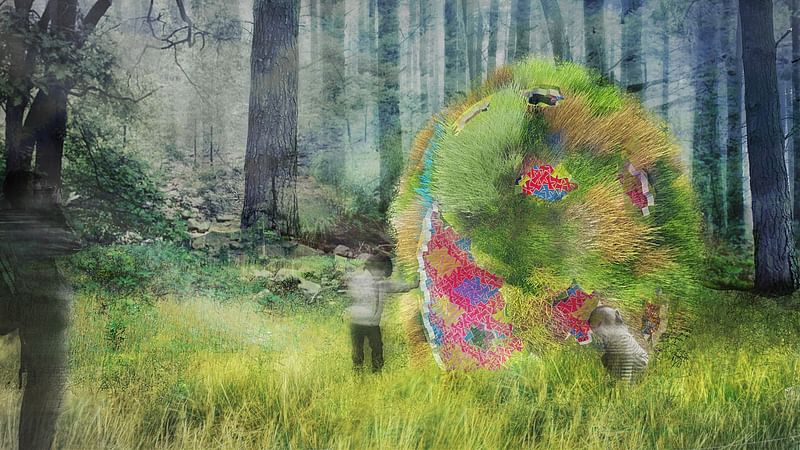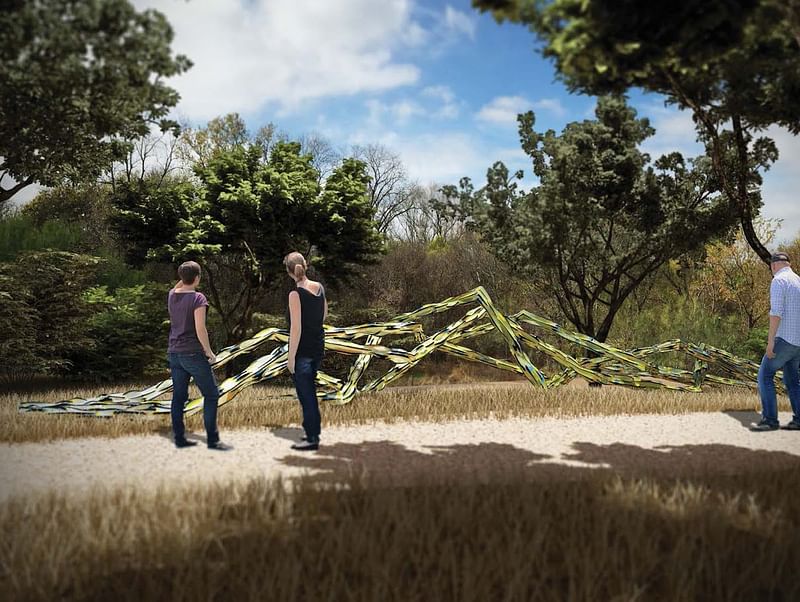Winners announced for the Field Constructs Design Competition
By Bustler Editors|
Thursday, Aug 20, 2015

Related
The Field Constructs Design Competition concluded today with the announcement of the winners. FCDC invited architects and designers worldwide to share their most inventive ideas for a temporary outdoor installation that will be exhibited at the Circle Acres Nature Preserve in Austin, Texas. As a way to draw attention to the the unique landscape of the East Austin competition site, proposals were expected to creatively incorporate the site's historical and ecological factors.
Starting out with 82 entries and then down to 18 competition finalists, the jury selected four winners.
Scroll down for more.
The winning designs will be installed at Circle Acres for a public event on November 14-22. The FCDC is currently fundraising for the installation and programming of the designs, and tax-deductible donations can be made here.
Concurrently, an exhibition showcasing the 18 finalist entries will be at the University of Texas at Austin from November 13-23, 2015.
Check out the winning designs below.
99 WHITE BALLOONS
by Invivia (Brad Cantrell, Allen Sayegh, Stefano Andreani, Craig Reschke, Ziyi Zhang) | Cambridge, MA.

Project description: "99 WHITE BALLONS is activated by a series of microphones and proximity sensors as well as 396 LED lights that float high above the ground with the balloons. When a person (or deer or other wildlife) approaches the proximity sensor, a stepper motor slowly draws the balloon cable closer to the ground at that anchor tower. As they move away, the balloon cable is released. Similarly, sounds picked up by the microphones at each anchor tower increase the intensity of the LEDs in waves outward from that tower. The towers themselves are equipped with LEDs that respond to small temperature variations, illuminating the microclimates at work between the ground and the tree canopy. Each tower, and its relationship to the floating ring, illustrates the small differences in each of the preserve’s three landscape types through temperature, ambient sound, and movement."
DUCK BLIND IN PLAIN SITE
by Jonathan Scelsa, John Paul Rysavy, Jennifer Birkeland, Isaac Stein, Nick Mitchell, Erin Wythoff | Brooklyn, New York

Project description: "DUCK BLIND IN PLAIN SITE was born of a desire for contextual double readings, wherein architectural form “doubly functions” to exist in its own system while simultaneously existing within the system of its site. DUCK BLIND’S exterior, shrouded in camouflage, seeks to hide within its pastoral setting, while its interior attempts to subvert the exterior’s camouflage with apertures and thresholds showcasing bright chromatic interior claddings. DUCK BLIND’S contextual tension is heightened through its material composition: a double-sided brick construction featuring high-contrast post-consumer recycled materials as cladding on the interior, and, on the exterior, grass harvested from the seasonal cycle of local ecologies. The goal is to create an object that expresses a visual tension in relation to its context, oscillating from being one with to being against nature."
BLURRED BODIES
by Studio Roland Snooks (Roland Snooks, Cam Newnham, Sascha Bohnenberger) | Melbourne, Australia

Project description: "BLURRED BODIES hovers between the natural and the artificial. It shifts between camouflaging with its environment and reveling in its alienation. The project has been designed using behavioral-based algorithms in which a turbulent surface emerges from a swarm of agentBodies. This process imbues the project with a natural or swarmlike character, which is balanced against the industrial nature of its fabrication process and tectonic detailing. While sculptural in nature, the project is fundamentally an architectural prototype. It is part of an ongoing exploration into the synthesis of surface, structure, and ornament through complex systems. BLURRED BODIES is an experiment that is intended to be inhabited — or at least navigated. It sits somewhere between an installation and a pavilion, with ambitions of being proto-architectural."
HYBROOT
by OTA+ (Kory Bieg) | Austin, Texas

Project description: "HYBROOT reflects the balance between urban fabric and natural landscape indicative of the project site. The form, color, and material of HYBROOT mimic the surrounding grasses and tree canopy, while the fabrication, assembly, and surface patterning evoke a more synthetic sensibility. At first glance the two are inseparable, but on closer inspection one notices artificial formal compositions, unnatural pixelation of colors, and the artifact of the CNC-lathing process left as surface texture. The sheen and reflectivity of each paint color varies between the natural and plastic. It is both root and robot."
The jury:
- Virginia San Fratello of Rael San Fratello in Oakland, CA
- Benjamin Ball of Ball-Nogues Studio in Los Angeles, CA
- Ingrid Spencer, executive director of AIA Austin
- Jason Sowell, associate professor and program director of landscape architecture at The University of Texas at Austin School of Architecture
- John Grade, artist, Seattle, WA

Share
0 Comments
Comment as :